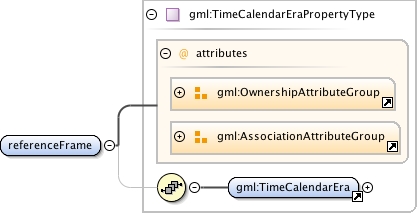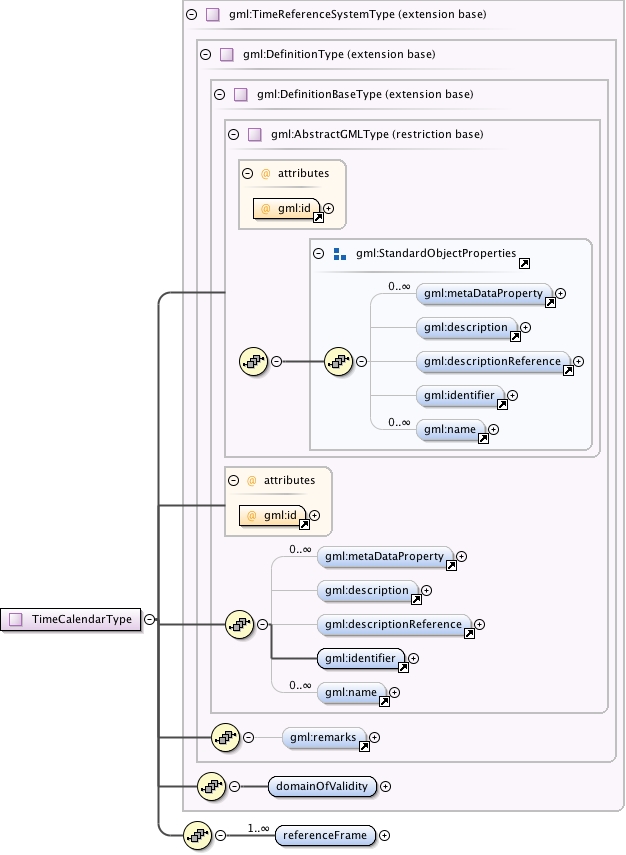| Namespace | http://www.opengis.net/gml/3.2 | ||||||||||||||||||||||||||||||||||||||||||||||||||||||||||||||||||||
|
Diagram
|
 |
||||||||||||||||||||||||||||||||||||||||||||||||||||||||||||||||||||
| Type | gml:TimeCalendarEraPropertyType | ||||||||||||||||||||||||||||||||||||||||||||||||||||||||||||||||||||
|
Properties
|
|
||||||||||||||||||||||||||||||||||||||||||||||||||||||||||||||||||||
| Model | gml:TimeCalendarEra | ||||||||||||||||||||||||||||||||||||||||||||||||||||||||||||||||||||
| Children | gml:TimeCalendarEra | ||||||||||||||||||||||||||||||||||||||||||||||||||||||||||||||||||||
|
Instance
|
|
||||||||||||||||||||||||||||||||||||||||||||||||||||||||||||||||||||
|
Attributes
|
|
||||||||||||||||||||||||||||||||||||||||||||||||||||||||||||||||||||
|
Source
|
|
||||||||||||||||||||||||||||||||||||||||||||||||||||||||||||||||||||
| Schema location | http://schemas.opengis.net/gml/3.2.1/temporalReferenceSystems.xsd |
